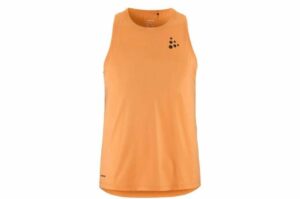Why neither “normal” nor minimalist running shoes will disappear
Different types of running shoes serve different needs, so we're unlikely to reach a universal consensus.
Which is better: a pill that 75% of the population can take, which produces wonderful benefits for 25% of those who take it; or a pill that 25% of the population can take, which produces wonderful benefits for 75% of those who take it? I was pondering this question while re-reading Peter Vigneron’s long, thoughtful piece about running form, from the June issue of Runner’s World. This passage, in particular, made me think:
Perhaps—and this, too, is speculative—the modern cushioned running shoe makes running easy for the modern runner. This seems like a good thing. Should millions of runners suddenly decide to change their form and then find that running is no longer a manageable activity, it would be a tragedy. The solution to an imperfect state of affairs ought not make things worse—it should not produce more injured, unhappy runners.
One of the common narratives you hear a lot these days is that modern running shoes are the product of an insidious corporate campaign to sell us useless shoes that effectively enslave us by weakening our feet. I find this conspiracy-theory stuff quite tiresome — shoes may or may not be good for us, and of course shoe companies want to sell us anything they can, but I have no doubt that the origin of what Pete Larson calls the “pronation paradigm” was well-intentioned. The simple but often overlooked point is that the shoes caught on. I’d bet that, in 10 years, the recent fad for “toning shoes” will be all but forgotten since they simply don’t work. But running shoes have had remarkable staying power — perhaps because, as Vigneron says, “the modern cushioned running shoe makes running easy for the modern runner.” Or at least some modern runners, some of the time.
Let’s say we accept that, in a perfect world, the barefoot running style is optimal for humans. What if in our postlapsarian modern society, a large proportion of us are simply not equipped to make that transition after decades of sedentary, shod living? Or we can make the transition, but it requires the careful, patient, dedicated, slightly obsessive six-month transition period that barefoot advocates scrupulously recommend? Given the staggeringly high numbers of people who can’t be bothered to do any physical activity, even so much as a brisk walk, despite the overwhelming evidence that it’s the single best thing they could do for all aspects of their physical and mental health, I suspect that the barriers to successful barefoot running will always limit it to a fairly small subset of population.
So that’s what my opening question was about: what if barefoot running is fantastic for a small segment of the population, while running shoes are hit-and-miss but accessible to a much larger portion of the population? What’s the “right” answer to how we proceed? Obviously I chose my sample numbers carefully (so that both versions of the pill help 18.75% of the population, if anyone’s checking the math), but I wonder what those numbers are in reality. How many people can barefoot running reach? How “bad” are normal shoes? In the end, the numbers don’t really matter — because there will always be some part of the population that can succeed with one approach but not the other.

